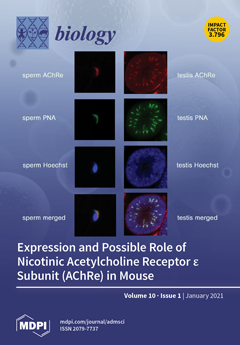Cryptosporidium parvum is an apicomplexan zoonotic parasite recognized as the second leading-cause of diarrhoea-induced mortality in children. In contrast to other apicomplexans,
C.parvum has minimalistic metabolic capacities which are almost exclusively based on glycolysis. Consequently,
C. parvum is highly dependent on its
[...] Read more.
Cryptosporidium parvum is an apicomplexan zoonotic parasite recognized as the second leading-cause of diarrhoea-induced mortality in children. In contrast to other apicomplexans,
C.parvum has minimalistic metabolic capacities which are almost exclusively based on glycolysis. Consequently,
C. parvum is highly dependent on its host cell metabolism. In vivo (within the intestine) infected epithelial host cells are typically exposed to low oxygen pressure (1–11% O
2, termed physioxia). Here, we comparatively analyzed the metabolic signatures of
C. parvum-infected HCT-8 cells cultured under both, hyperoxia (21% O
2), representing the standard oxygen condition used in most experimental settings, and physioxia (5% O
2), to be closer to the in vivo situation. The most pronounced effect of
C. parvum infection on host cell metabolism was, on one side, an increase in glucose and glutamine uptake, and on the other side, an increase in lactate release. When cultured in a glutamine-deficient medium,
C. parvum infection led to a massive increase in glucose consumption and lactate production. Together, these results point to the important role of both glycolysis and glutaminolysis during
C. parvum intracellular replication. Referring to obtained metabolic signatures, we targeted glycolysis as well as glutaminolysis in
C. parvum-infected host cells by using the inhibitors lonidamine [inhibitor of hexokinase, mitochondrial carrier protein (MCP) and monocarboxylate transporters (MCT) 1, 2, 4], galloflavin (lactate dehydrogenase inhibitor), syrosingopine (MCT1- and MCT4 inhibitor) and compound 968 (glutaminase inhibitor) under hyperoxic and physioxic conditions. In line with metabolic signatures, all inhibitors significantly reduced parasite replication under both oxygen conditions, thereby proving both energy-related metabolic pathways, glycolysis and glutaminolysis, but also lactate export mechanisms via MCTs as pivotal for
C. parvum under in vivo physioxic conditions of mammals.
Full article






